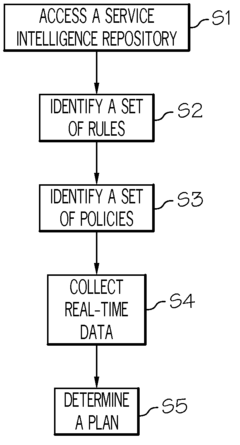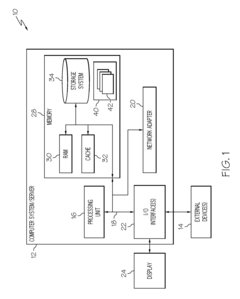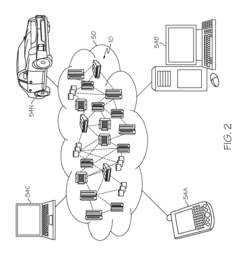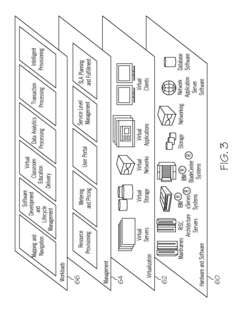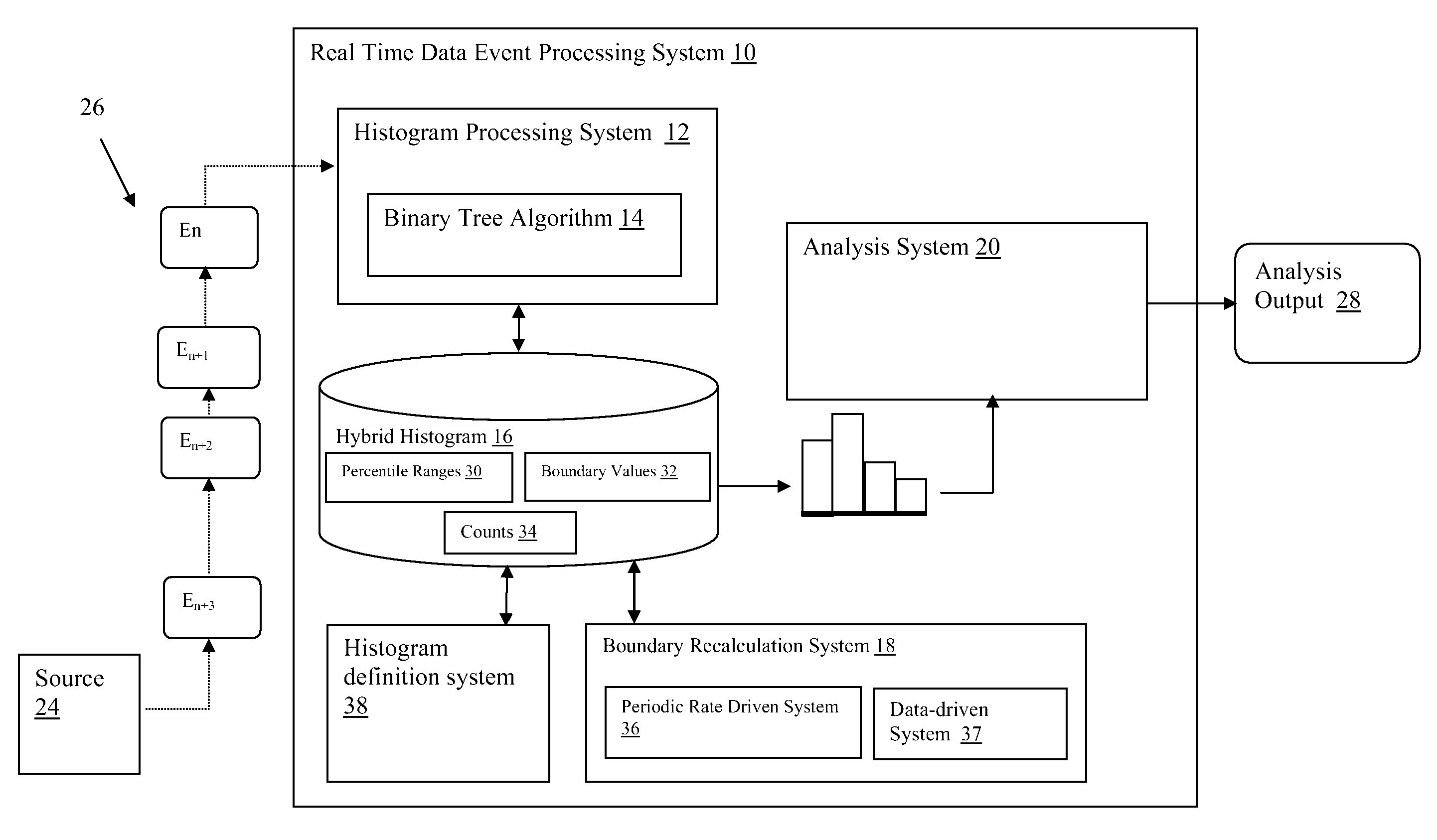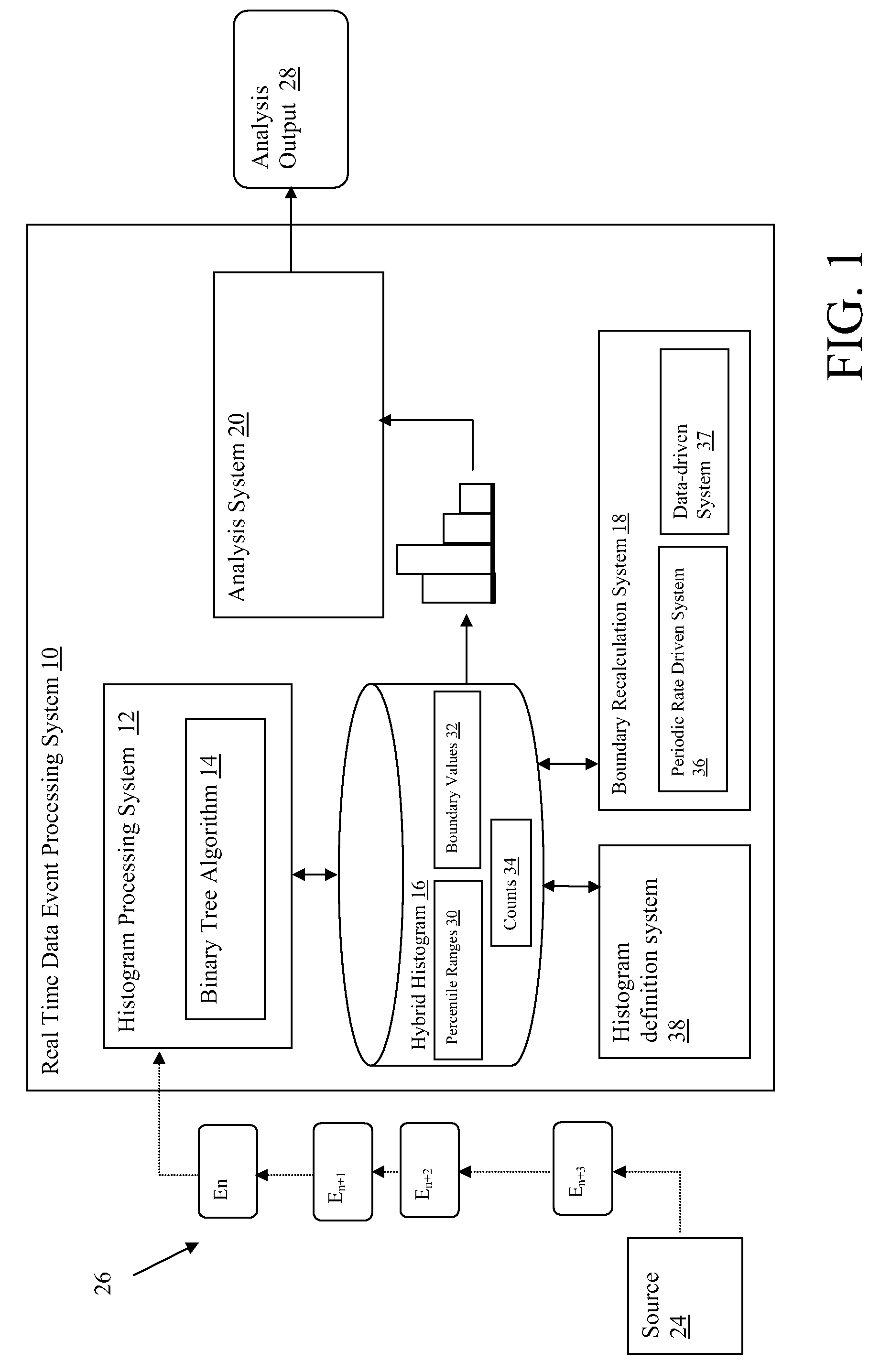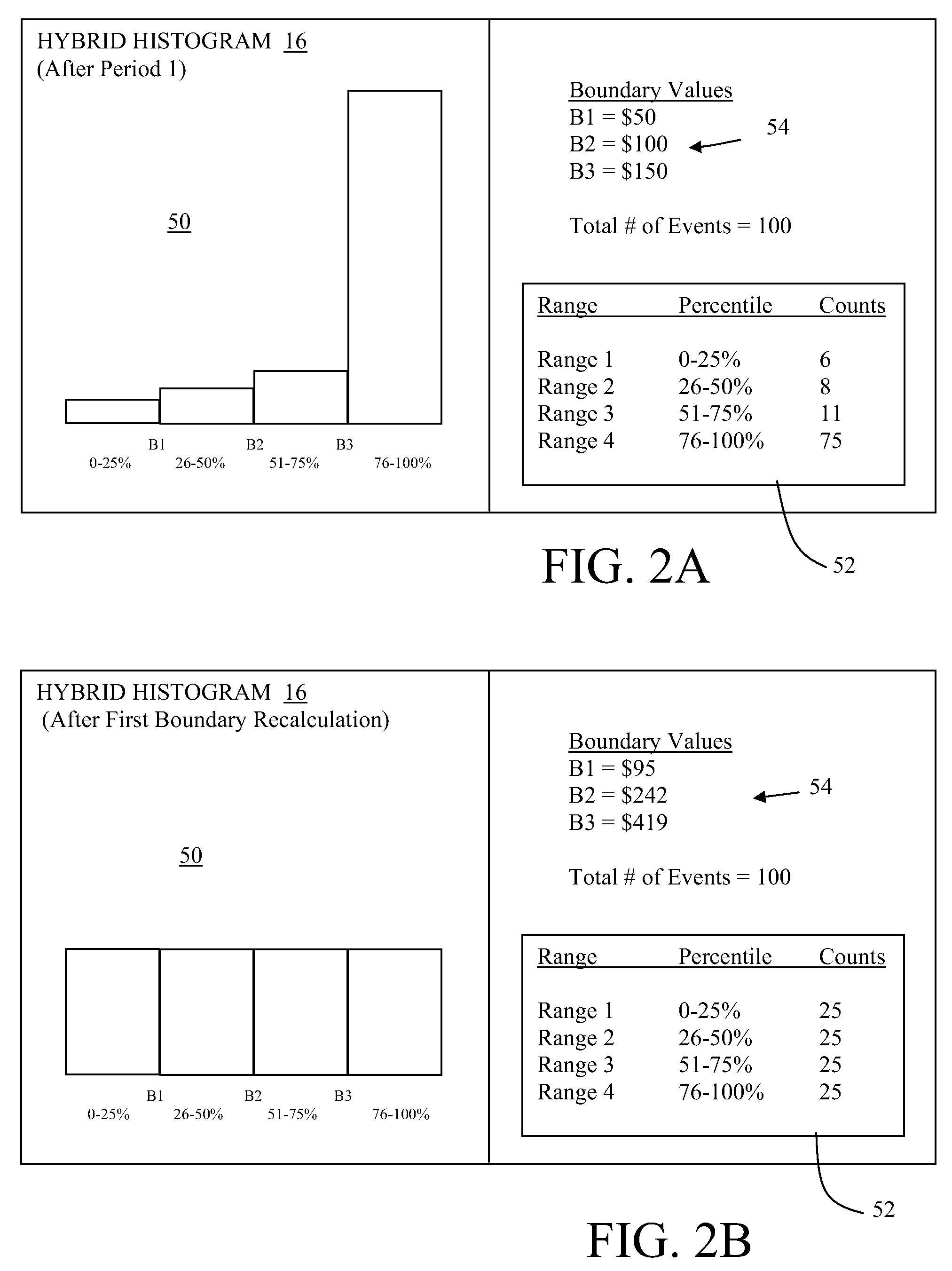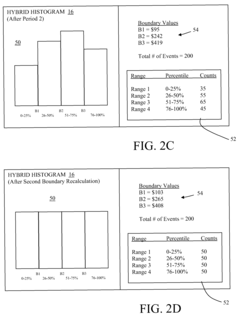How neuromorphic materials facilitate real-time data analysis
SEP 19, 202510 MIN READ
Generate Your Research Report Instantly with AI Agent
Patsnap Eureka helps you evaluate technical feasibility & market potential.
Neuromorphic Materials Background and Objectives
Neuromorphic computing represents a paradigm shift in computational architecture, drawing inspiration from the structure and function of biological neural systems. This field has evolved significantly since the 1980s when Carver Mead first introduced the concept, progressing from theoretical frameworks to practical implementations that leverage specialized materials designed to mimic neural processes. The fundamental goal of neuromorphic materials research is to develop substrates that can process information in ways analogous to biological neural networks, offering advantages in energy efficiency, parallelism, and adaptability.
The evolution of neuromorphic materials has been driven by limitations in conventional von Neumann computing architectures, particularly when handling complex, real-time data analysis tasks. Traditional computing systems face significant bottlenecks due to the physical separation between processing and memory units, resulting in increased power consumption and latency. Neuromorphic materials aim to overcome these limitations by integrating memory and processing functions within the same physical substrate, enabling more efficient information processing paradigms.
Current neuromorphic materials encompass a diverse range of technologies, including memristive devices, phase-change materials, spintronic systems, and organic electronic materials. These materials exhibit properties such as non-volatile memory, analog computation capabilities, and activity-dependent plasticity that closely resemble the behavior of biological synapses and neurons. The development trajectory has been marked by progressive improvements in material stability, scalability, and integration potential with existing semiconductor technologies.
The primary technical objectives in this field include achieving higher degrees of synaptic density, reducing energy consumption per synaptic operation, enhancing long-term reliability, and developing materials that can support various forms of neuroplasticity. These objectives align with the broader goal of enabling real-time processing of complex, unstructured data streams—a capability increasingly demanded in applications ranging from autonomous vehicles to advanced healthcare monitoring systems.
Recent advancements have demonstrated promising results in using neuromorphic materials for accelerating specific computational tasks, particularly those involving pattern recognition, anomaly detection, and sensory data processing. These materials show particular promise for edge computing applications where power constraints and real-time processing requirements present significant challenges for conventional computing systems.
Looking forward, the field aims to develop neuromorphic materials and systems capable of handling increasingly complex cognitive tasks while maintaining energy efficiency advantages. This includes developing materials that can support more sophisticated learning algorithms, exhibit greater adaptability to changing data environments, and integrate seamlessly with conventional computing infrastructure to create hybrid systems that leverage the strengths of both paradigms.
The evolution of neuromorphic materials has been driven by limitations in conventional von Neumann computing architectures, particularly when handling complex, real-time data analysis tasks. Traditional computing systems face significant bottlenecks due to the physical separation between processing and memory units, resulting in increased power consumption and latency. Neuromorphic materials aim to overcome these limitations by integrating memory and processing functions within the same physical substrate, enabling more efficient information processing paradigms.
Current neuromorphic materials encompass a diverse range of technologies, including memristive devices, phase-change materials, spintronic systems, and organic electronic materials. These materials exhibit properties such as non-volatile memory, analog computation capabilities, and activity-dependent plasticity that closely resemble the behavior of biological synapses and neurons. The development trajectory has been marked by progressive improvements in material stability, scalability, and integration potential with existing semiconductor technologies.
The primary technical objectives in this field include achieving higher degrees of synaptic density, reducing energy consumption per synaptic operation, enhancing long-term reliability, and developing materials that can support various forms of neuroplasticity. These objectives align with the broader goal of enabling real-time processing of complex, unstructured data streams—a capability increasingly demanded in applications ranging from autonomous vehicles to advanced healthcare monitoring systems.
Recent advancements have demonstrated promising results in using neuromorphic materials for accelerating specific computational tasks, particularly those involving pattern recognition, anomaly detection, and sensory data processing. These materials show particular promise for edge computing applications where power constraints and real-time processing requirements present significant challenges for conventional computing systems.
Looking forward, the field aims to develop neuromorphic materials and systems capable of handling increasingly complex cognitive tasks while maintaining energy efficiency advantages. This includes developing materials that can support more sophisticated learning algorithms, exhibit greater adaptability to changing data environments, and integrate seamlessly with conventional computing infrastructure to create hybrid systems that leverage the strengths of both paradigms.
Market Analysis for Real-time Data Processing Solutions
The real-time data processing market is experiencing unprecedented growth, driven by the proliferation of IoT devices, smart infrastructure, and the increasing demand for instantaneous analytics across industries. Current market valuations place the global real-time data processing sector at approximately $15.3 billion in 2023, with projections indicating a compound annual growth rate (CAGR) of 22.7% through 2028, potentially reaching $42.9 billion.
Several key industries are fueling this expansion. Healthcare organizations increasingly require real-time patient monitoring and diagnostic systems, with neuromorphic solutions offering significant advantages in processing complex biosignals with minimal latency and power consumption. The autonomous vehicle sector represents another substantial market segment, where neuromorphic materials enable the processing of sensor data from cameras, LiDAR, and radar systems in milliseconds—a critical requirement for safe operation.
Financial services constitute a third major market driver, with high-frequency trading algorithms and fraud detection systems demanding computational solutions that can process transactions and identify anomalies in microseconds. Neuromorphic materials, which mimic the brain's neural architecture, provide substantial competitive advantages in these time-sensitive applications.
Market research indicates that traditional computing architectures are reaching fundamental limitations in meeting these real-time processing demands. Conventional von Neumann architectures face inherent bottlenecks due to the separation of memory and processing units, creating latency issues that neuromorphic systems can overcome through their parallel processing capabilities.
From a geographical perspective, North America currently dominates the market with approximately 42% share, followed by Europe (27%) and Asia-Pacific (23%). However, the Asia-Pacific region is expected to witness the fastest growth rate over the next five years, particularly driven by China's substantial investments in neuromorphic computing research and manufacturing capabilities.
Customer pain points in the current market center around energy efficiency, with data centers consuming increasingly unsustainable amounts of power. Neuromorphic materials offer a compelling value proposition by potentially reducing energy consumption by 90-95% compared to traditional computing solutions for certain workloads, while simultaneously improving processing speeds.
Market adoption barriers include integration challenges with existing systems, limited developer expertise in neuromorphic programming paradigms, and higher initial implementation costs. However, early adopters are reporting significant competitive advantages through reduced latency and operational costs, suggesting these barriers will diminish as the technology matures and standardization increases.
Several key industries are fueling this expansion. Healthcare organizations increasingly require real-time patient monitoring and diagnostic systems, with neuromorphic solutions offering significant advantages in processing complex biosignals with minimal latency and power consumption. The autonomous vehicle sector represents another substantial market segment, where neuromorphic materials enable the processing of sensor data from cameras, LiDAR, and radar systems in milliseconds—a critical requirement for safe operation.
Financial services constitute a third major market driver, with high-frequency trading algorithms and fraud detection systems demanding computational solutions that can process transactions and identify anomalies in microseconds. Neuromorphic materials, which mimic the brain's neural architecture, provide substantial competitive advantages in these time-sensitive applications.
Market research indicates that traditional computing architectures are reaching fundamental limitations in meeting these real-time processing demands. Conventional von Neumann architectures face inherent bottlenecks due to the separation of memory and processing units, creating latency issues that neuromorphic systems can overcome through their parallel processing capabilities.
From a geographical perspective, North America currently dominates the market with approximately 42% share, followed by Europe (27%) and Asia-Pacific (23%). However, the Asia-Pacific region is expected to witness the fastest growth rate over the next five years, particularly driven by China's substantial investments in neuromorphic computing research and manufacturing capabilities.
Customer pain points in the current market center around energy efficiency, with data centers consuming increasingly unsustainable amounts of power. Neuromorphic materials offer a compelling value proposition by potentially reducing energy consumption by 90-95% compared to traditional computing solutions for certain workloads, while simultaneously improving processing speeds.
Market adoption barriers include integration challenges with existing systems, limited developer expertise in neuromorphic programming paradigms, and higher initial implementation costs. However, early adopters are reporting significant competitive advantages through reduced latency and operational costs, suggesting these barriers will diminish as the technology matures and standardization increases.
Current Neuromorphic Materials Landscape and Challenges
The neuromorphic materials landscape has evolved significantly over the past decade, with various materials being explored for their potential to mimic brain-like computing. Currently, memristive materials dominate this field, including metal oxides (HfO2, TiO2), phase-change materials (Ge2Sb2Te5), and ferroelectric materials (BiFeO3). These materials exhibit non-volatile resistance switching properties that enable them to function as artificial synapses, storing information as conductance states that can be modulated through electrical stimuli.
Despite promising advancements, significant challenges persist in neuromorphic material development. Device variability remains a critical issue, with cycle-to-cycle and device-to-device variations undermining reliability in large-scale implementations. Current materials often demonstrate limited endurance, typically supporting 10^6-10^9 switching cycles before degradation, which falls short of the requirements for continuous real-time data processing applications.
Energy efficiency presents another substantial hurdle. While biological neurons operate at approximately 10 fJ per synaptic event, most existing neuromorphic devices consume 100-1000 times more energy. This efficiency gap must be bridged to enable practical deployment in edge computing and IoT applications where power constraints are stringent.
The scalability of neuromorphic materials also faces significant challenges. Integration with CMOS technology requires compatibility with standard semiconductor fabrication processes, which many exotic materials fail to achieve. Additionally, the three-dimensional connectivity characteristic of biological neural networks remains difficult to replicate with current planar fabrication techniques.
From a geographical perspective, research in neuromorphic materials shows distinct regional focuses. North American institutions lead in fundamental material science and novel architecture design, while East Asian research centers, particularly in South Korea and China, excel in large-scale integration and manufacturing processes. European research groups have made notable contributions in bio-inspired designs and alternative material systems.
The temporal dynamics of neuromorphic materials present another challenge for real-time data analysis. Most current materials exhibit switching speeds in the nanosecond range, which, while faster than biological neurons, often come with trade-offs in retention time and stability. Materials that can maintain precise temporal characteristics while performing complex computations are still under development.
Addressing these challenges requires interdisciplinary collaboration between material scientists, electrical engineers, and computer architects. Recent research directions include exploring two-dimensional materials like graphene and MXenes, which offer atomic-level control over material properties, and developing composite materials that combine the advantages of different neuromorphic mechanisms.
Despite promising advancements, significant challenges persist in neuromorphic material development. Device variability remains a critical issue, with cycle-to-cycle and device-to-device variations undermining reliability in large-scale implementations. Current materials often demonstrate limited endurance, typically supporting 10^6-10^9 switching cycles before degradation, which falls short of the requirements for continuous real-time data processing applications.
Energy efficiency presents another substantial hurdle. While biological neurons operate at approximately 10 fJ per synaptic event, most existing neuromorphic devices consume 100-1000 times more energy. This efficiency gap must be bridged to enable practical deployment in edge computing and IoT applications where power constraints are stringent.
The scalability of neuromorphic materials also faces significant challenges. Integration with CMOS technology requires compatibility with standard semiconductor fabrication processes, which many exotic materials fail to achieve. Additionally, the three-dimensional connectivity characteristic of biological neural networks remains difficult to replicate with current planar fabrication techniques.
From a geographical perspective, research in neuromorphic materials shows distinct regional focuses. North American institutions lead in fundamental material science and novel architecture design, while East Asian research centers, particularly in South Korea and China, excel in large-scale integration and manufacturing processes. European research groups have made notable contributions in bio-inspired designs and alternative material systems.
The temporal dynamics of neuromorphic materials present another challenge for real-time data analysis. Most current materials exhibit switching speeds in the nanosecond range, which, while faster than biological neurons, often come with trade-offs in retention time and stability. Materials that can maintain precise temporal characteristics while performing complex computations are still under development.
Addressing these challenges requires interdisciplinary collaboration between material scientists, electrical engineers, and computer architects. Recent research directions include exploring two-dimensional materials like graphene and MXenes, which offer atomic-level control over material properties, and developing composite materials that combine the advantages of different neuromorphic mechanisms.
Current Neuromorphic Architectures for Real-time Analysis
01 Neuromorphic computing architectures for real-time data processing
Neuromorphic computing architectures mimic the structure and function of the human brain to enable efficient real-time data analysis. These systems utilize specialized hardware designs that integrate memory and processing units to reduce data transfer bottlenecks. By implementing neural network principles directly in hardware, these architectures achieve significant improvements in processing speed and energy efficiency for complex data analysis tasks, making them suitable for applications requiring immediate insights from large datasets.- Neuromorphic computing architectures for real-time data processing: Neuromorphic computing architectures mimic the structure and function of the human brain to enable efficient real-time data analysis. These systems utilize parallel processing capabilities and specialized hardware to process complex data streams with minimal latency. The architecture incorporates neural networks that can adapt and learn from incoming data, making them particularly suitable for applications requiring immediate analysis of large datasets.
- Materials for neuromorphic sensors and data acquisition: Advanced materials are being developed specifically for neuromorphic sensing applications that can capture and pre-process data in real-time. These materials exhibit properties such as memristive behavior, allowing them to both store and process information simultaneously. By integrating these materials into sensor designs, systems can perform initial data filtering and feature extraction at the hardware level, significantly reducing the computational load for subsequent processing stages.
- Memristive devices for real-time neural processing: Memristive devices serve as artificial synapses in neuromorphic systems, enabling efficient real-time data analysis through their ability to simultaneously store and process information. These devices change their resistance based on the history of applied voltage or current, mimicking biological synaptic plasticity. This property allows for the implementation of learning algorithms directly in hardware, facilitating adaptive real-time processing of complex data streams with significantly lower power consumption compared to traditional computing architectures.
- Energy-efficient neuromorphic algorithms for continuous data analysis: Specialized algorithms designed for neuromorphic hardware enable energy-efficient continuous analysis of data streams. These algorithms leverage spike-based computation and event-driven processing to minimize power consumption while maintaining real-time performance. By processing only relevant changes in data rather than constantly analyzing the entire data stream, these approaches achieve significant energy savings while still providing timely insights from the incoming information.
- Integration of neuromorphic systems with IoT for distributed real-time analytics: Neuromorphic systems are being integrated with Internet of Things (IoT) networks to enable distributed real-time data analytics at the edge. This integration allows for immediate processing of sensor data where it is generated, reducing latency and bandwidth requirements. The neuromorphic components provide adaptive learning capabilities that can evolve based on local conditions, enabling intelligent decision-making without constant communication with centralized servers.
02 Materials for neuromorphic sensors and data acquisition
Advanced materials are being developed specifically for neuromorphic sensing applications that can capture and pre-process data in real-time. These materials exhibit properties such as memristive behavior, allowing them to simultaneously sense environmental changes and perform initial data processing. By integrating sensing and computing functions at the material level, these neuromorphic sensors reduce latency in data acquisition systems and enable more efficient real-time analysis of physical phenomena, environmental conditions, or biological signals.Expand Specific Solutions03 Memristive materials for neuromorphic computing
Memristive materials form the foundation of many neuromorphic computing systems by providing analog memory capabilities similar to biological synapses. These materials can change their resistance based on the history of applied voltage or current, enabling them to store and process information simultaneously. When incorporated into neuromorphic circuits, memristive materials facilitate parallel processing of complex data streams, supporting real-time analysis applications while consuming significantly less power than conventional computing architectures.Expand Specific Solutions04 Neuromorphic algorithms for streaming data analysis
Specialized algorithms designed for neuromorphic hardware enable continuous processing of streaming data in real-time. These algorithms are optimized to work with the unique architecture of neuromorphic systems, leveraging spike-based computation and event-driven processing. By focusing computational resources only when and where needed, these algorithms can efficiently analyze continuous data streams, detect patterns, and identify anomalies with minimal latency, making them ideal for applications in industrial monitoring, autonomous systems, and security.Expand Specific Solutions05 System integration for neuromorphic real-time analytics
Integrating neuromorphic components into larger computing ecosystems enables comprehensive real-time data analytics solutions. These integrated systems combine neuromorphic processors with conventional computing resources, specialized memory architectures, and communication interfaces to create end-to-end solutions for real-time data analysis. The system-level approach addresses challenges in data preprocessing, feature extraction, and result interpretation, allowing neuromorphic technology to be effectively deployed in practical applications requiring immediate insights from complex data streams.Expand Specific Solutions
Key Patents and Breakthroughs in Neuromorphic Materials
Real-time data analysis for resource provisioning among systems in a networked computing environment
PatentActiveUS9503549B2
Innovation
- An intelligent provisioning engine that accesses a service intelligence repository to collect configuration information, identify constraints and policies, and gather real-time data from monitoring systems to determine a provisioning plan, integrating with ancillary systems for scalable and efficient resource allocation.
Real time analytics using hybrid histograms
PatentInactiveUS7826663B2
Innovation
- A hybrid histogram system with varying percentile ranges and periodic boundary recalculation, allowing for efficient processing of data streams with a running statistical summary, using a binary tree algorithm to identify percentile ranges and increment counts, and adjusting boundaries based on data distribution or periodic rates.
Energy Efficiency Considerations in Neuromorphic Systems
Energy efficiency represents a critical consideration in the development and implementation of neuromorphic systems. Traditional computing architectures based on von Neumann principles face significant energy constraints when processing the massive data volumes required for real-time analysis. Neuromorphic materials offer a revolutionary approach to this challenge by mimicking the brain's inherent energy efficiency, which operates at approximately 20 watts despite performing complex cognitive tasks.
The fundamental energy advantage of neuromorphic systems stems from their event-driven processing nature. Unlike conventional computers that continuously consume power regardless of computational load, neuromorphic materials activate only when processing signals, significantly reducing static power consumption. This approach eliminates the energy waste associated with clock-synchronized operations in traditional computing architectures, resulting in power savings of up to 1000x for certain applications.
Memristive devices, a cornerstone of many neuromorphic implementations, demonstrate remarkable energy profiles. These materials can maintain state information without continuous power supply, enabling persistent memory with minimal energy expenditure. Recent advancements in phase-change materials and resistive RAM technologies have further reduced the energy required for synaptic operations to femtojoule levels, approaching the efficiency of biological neural systems.
The co-location of memory and processing in neuromorphic materials addresses the von Neumann bottleneck that dominates energy consumption in conventional computing. By eliminating the constant data transfer between separate memory and processing units, neuromorphic systems reduce both latency and energy requirements. This architectural advantage becomes particularly significant in edge computing scenarios where power constraints are stringent but real-time data analysis remains essential.
Temperature management represents another critical energy consideration. Neuromorphic materials typically operate at lower temperatures than traditional semiconductor technologies, reducing cooling requirements that often account for substantial energy overhead in data centers. This characteristic makes neuromorphic systems particularly suitable for deployment in resource-constrained environments where active cooling is impractical.
As neuromorphic technologies mature, researchers are developing sophisticated power management techniques that dynamically adjust system parameters based on computational demands. These approaches include selective activation of neuromorphic regions, adaptive precision computing, and context-aware power gating. Such techniques enable neuromorphic systems to maintain optimal energy efficiency across varying workloads while preserving real-time analysis capabilities.
The fundamental energy advantage of neuromorphic systems stems from their event-driven processing nature. Unlike conventional computers that continuously consume power regardless of computational load, neuromorphic materials activate only when processing signals, significantly reducing static power consumption. This approach eliminates the energy waste associated with clock-synchronized operations in traditional computing architectures, resulting in power savings of up to 1000x for certain applications.
Memristive devices, a cornerstone of many neuromorphic implementations, demonstrate remarkable energy profiles. These materials can maintain state information without continuous power supply, enabling persistent memory with minimal energy expenditure. Recent advancements in phase-change materials and resistive RAM technologies have further reduced the energy required for synaptic operations to femtojoule levels, approaching the efficiency of biological neural systems.
The co-location of memory and processing in neuromorphic materials addresses the von Neumann bottleneck that dominates energy consumption in conventional computing. By eliminating the constant data transfer between separate memory and processing units, neuromorphic systems reduce both latency and energy requirements. This architectural advantage becomes particularly significant in edge computing scenarios where power constraints are stringent but real-time data analysis remains essential.
Temperature management represents another critical energy consideration. Neuromorphic materials typically operate at lower temperatures than traditional semiconductor technologies, reducing cooling requirements that often account for substantial energy overhead in data centers. This characteristic makes neuromorphic systems particularly suitable for deployment in resource-constrained environments where active cooling is impractical.
As neuromorphic technologies mature, researchers are developing sophisticated power management techniques that dynamically adjust system parameters based on computational demands. These approaches include selective activation of neuromorphic regions, adaptive precision computing, and context-aware power gating. Such techniques enable neuromorphic systems to maintain optimal energy efficiency across varying workloads while preserving real-time analysis capabilities.
Integration Pathways with Conventional Computing Infrastructure
The integration of neuromorphic materials with conventional computing infrastructure represents a critical challenge and opportunity in advancing real-time data analysis capabilities. Current computing architectures based on the von Neumann model face significant bottlenecks when processing massive data streams in real-time, particularly due to the separation between memory and processing units. Neuromorphic materials offer a complementary approach that can be strategically integrated with existing systems.
Hardware integration pathways primarily follow three approaches: co-processor configurations, hybrid architectures, and accelerator modules. In co-processor implementations, neuromorphic components handle specific pattern recognition and signal processing tasks while conventional CPUs manage control flow and complex logical operations. This division of labor leverages the strengths of both paradigms while minimizing architectural conflicts.
Hybrid architectures represent a deeper integration where neuromorphic elements are embedded directly within conventional computing frameworks. These systems utilize specialized interfaces that translate between spike-based neuromorphic signals and digital binary representations. Companies like Intel and IBM have pioneered such approaches with their Loihi and TrueNorth chips respectively, demonstrating significant energy efficiency improvements for real-time analytics workloads.
Software frameworks play an equally important role in successful integration. Middleware solutions that abstract the complexity of neuromorphic computing are emerging, allowing developers to utilize these novel materials without extensive domain expertise. Notable examples include IBM's Nengo framework and the open-source PyNN platform, which provide high-level APIs for programming neuromorphic systems while maintaining compatibility with traditional software ecosystems.
Data formatting and conversion mechanisms constitute another critical integration component. Real-time data streams must be efficiently encoded into spike-based representations for neuromorphic processing and then translated back into conventional formats. Specialized encoding schemes like Temporal Contrast (TC) and Address-Event Representation (AER) have been developed to facilitate this bidirectional communication with minimal latency overhead.
System-level orchestration presents perhaps the most sophisticated integration challenge. Workload schedulers must intelligently distribute computational tasks between conventional and neuromorphic components based on their respective strengths. Dynamic load balancing algorithms that continuously optimize this distribution are showing promise in experimental deployments, particularly for applications with variable processing requirements such as autonomous vehicle sensor fusion and industrial IoT analytics.
The roadmap for future integration efforts increasingly focuses on standardization. Industry consortia are working to establish common interfaces and protocols that would allow neuromorphic components from different manufacturers to seamlessly integrate with conventional computing infrastructure, potentially accelerating adoption across diverse application domains.
Hardware integration pathways primarily follow three approaches: co-processor configurations, hybrid architectures, and accelerator modules. In co-processor implementations, neuromorphic components handle specific pattern recognition and signal processing tasks while conventional CPUs manage control flow and complex logical operations. This division of labor leverages the strengths of both paradigms while minimizing architectural conflicts.
Hybrid architectures represent a deeper integration where neuromorphic elements are embedded directly within conventional computing frameworks. These systems utilize specialized interfaces that translate between spike-based neuromorphic signals and digital binary representations. Companies like Intel and IBM have pioneered such approaches with their Loihi and TrueNorth chips respectively, demonstrating significant energy efficiency improvements for real-time analytics workloads.
Software frameworks play an equally important role in successful integration. Middleware solutions that abstract the complexity of neuromorphic computing are emerging, allowing developers to utilize these novel materials without extensive domain expertise. Notable examples include IBM's Nengo framework and the open-source PyNN platform, which provide high-level APIs for programming neuromorphic systems while maintaining compatibility with traditional software ecosystems.
Data formatting and conversion mechanisms constitute another critical integration component. Real-time data streams must be efficiently encoded into spike-based representations for neuromorphic processing and then translated back into conventional formats. Specialized encoding schemes like Temporal Contrast (TC) and Address-Event Representation (AER) have been developed to facilitate this bidirectional communication with minimal latency overhead.
System-level orchestration presents perhaps the most sophisticated integration challenge. Workload schedulers must intelligently distribute computational tasks between conventional and neuromorphic components based on their respective strengths. Dynamic load balancing algorithms that continuously optimize this distribution are showing promise in experimental deployments, particularly for applications with variable processing requirements such as autonomous vehicle sensor fusion and industrial IoT analytics.
The roadmap for future integration efforts increasingly focuses on standardization. Industry consortia are working to establish common interfaces and protocols that would allow neuromorphic components from different manufacturers to seamlessly integrate with conventional computing infrastructure, potentially accelerating adoption across diverse application domains.
Unlock deeper insights with Patsnap Eureka Quick Research — get a full tech report to explore trends and direct your research. Try now!
Generate Your Research Report Instantly with AI Agent
Supercharge your innovation with Patsnap Eureka AI Agent Platform!
